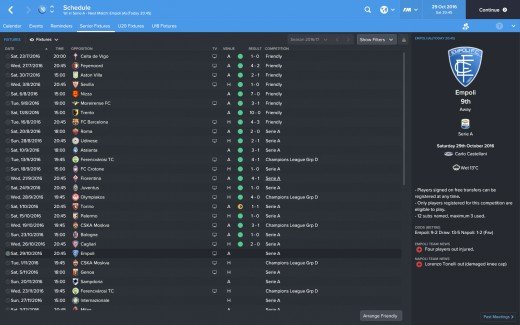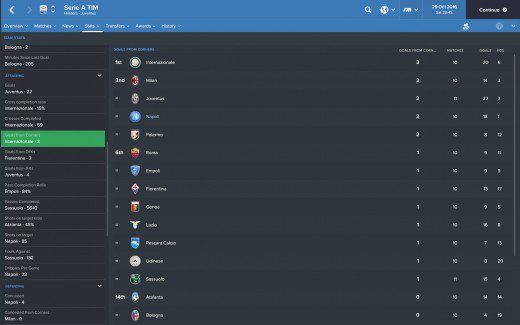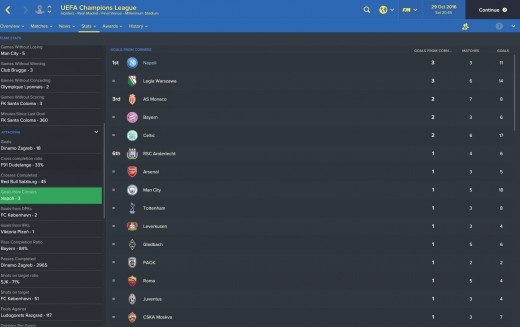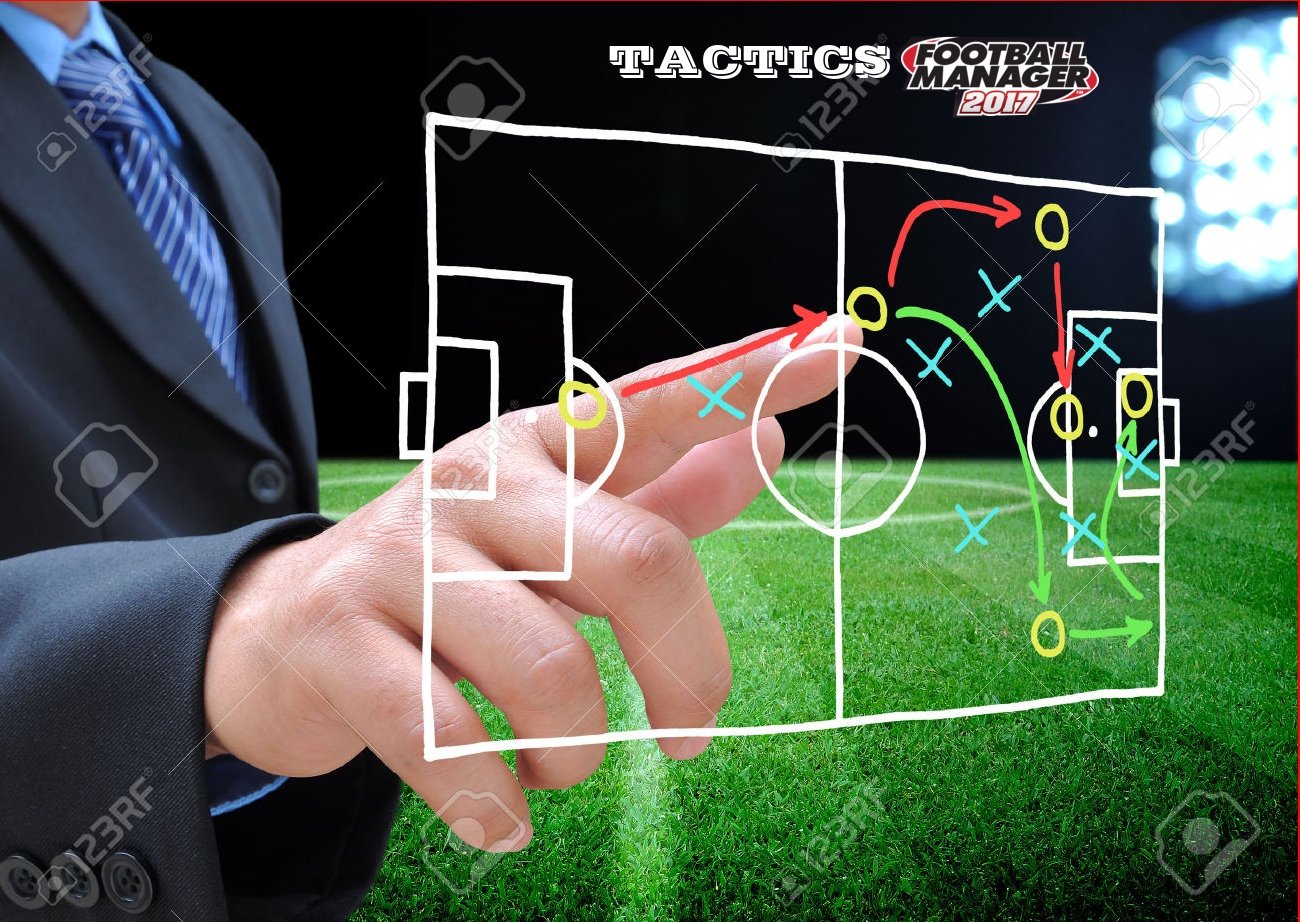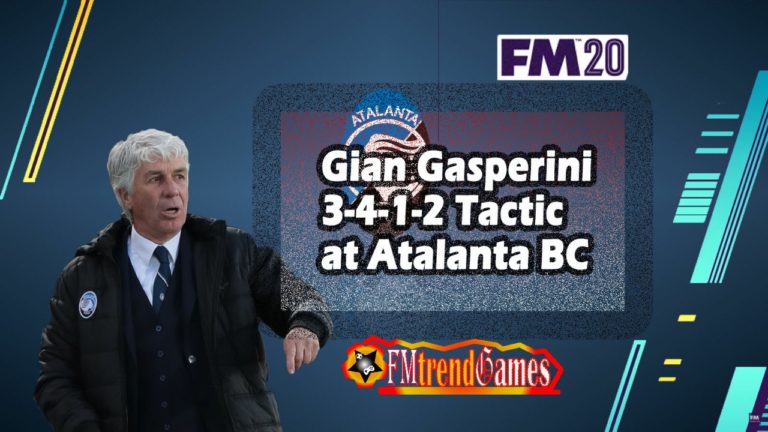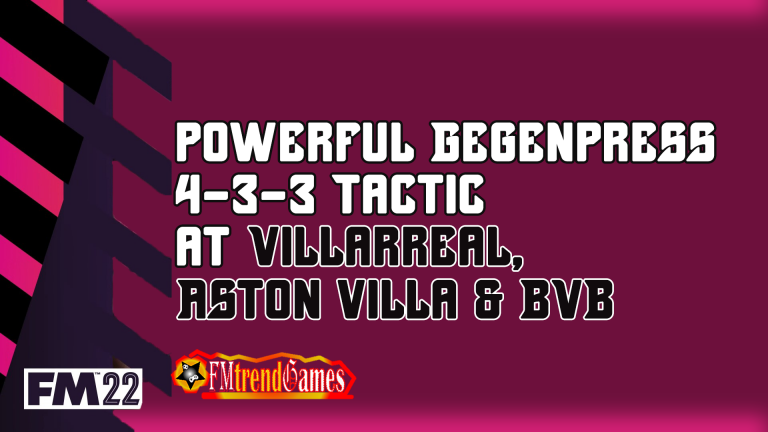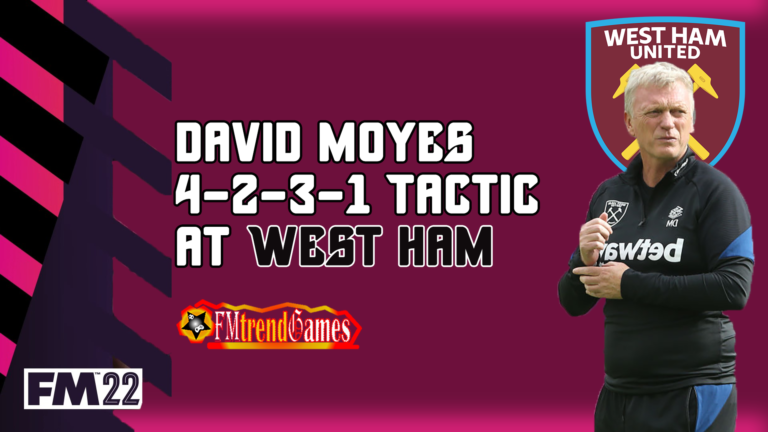A Balanced Tactic of 4-1-2-3 DM Asymmetric Formation in FM17
For those who are constantly in search of balanced tactics that can benefit high, average, and low-rated teams, the tactic that’s about to be shared in this write-up is a satisfactory option. Actually, it took a while to create an interesting all-around tactic, like this 4-1-2-3 DM asymmetric formation, that would work on every team in the Football Manager 2017 database.
It’s important to have this kind of tactic, especially for some people who are new to the FM game. When using this tactic, players may find it easy to have a successful season while they’re still getting to know the game better and from there, players can learn to select a specific type of tactic or philosophy to apply to their gaming experience.
As pointed out earlier, this is a balanced tactic. This means that all the areas like defence, midfield, and forward are covered in a balanced way. None is more dominant than the other. Sometimes choosing a formation that can work for your team can be challenging and confusing, but if you don’t know where to start or what particular philosophy you want to practice, this tactic may be helpful for you.
Tactic

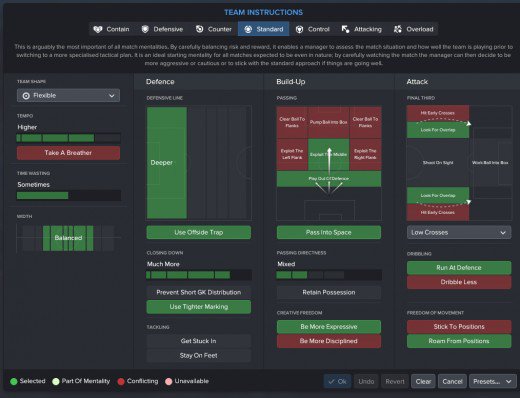
The 4-1-2-3 DM Asymmetric ST (CL)
Mentally, the formation is standard. It doesn’t need to be influenced by the defence, control, attacking, or overload mentality. The scattered arrangement displayed above is asymmetric, which is structured in a way to accommodate a balanced style of play. However, this arrangement can be a measure that deceives the opponent. Thus, they do find it difficult to pinpoint the weak spot. Opponents are left questioning whether it is in the midfield or the flanks. Technically, this is a versatile tactic. The team can play in narrow or wide width, depending on the opponent’s approach. They can choose to attack through the midfield or make good use of the wide forwards and fullbacks. In addition, this tactic is fuelled with 13 team instructions under a flexible team shape.
Roles and Duties
Keeper: Goalkeeper (Defend)
In this position, the ideal role for you to select is “Goalkeeper” with a defend duty. This role is considered to be the most suitable for this tactic, but you can also select the Sweeper role. Success and efficacy depend on the quality of keeper you have.

Central Defence: Central Defender (Stopper) and Defensive Centre Back (Cover)
Opting for the stopper duty for CD and a cover duty for DCB are both very effective tactically. The Central Defender’s main job is to close down the opponent strikers, stopping them from getting the ball in dangerous positions. Interception is the key for this defender. You have to instruct him to tackle harder and not to hold position. He needs freedom to influence flexibility on the pitch.
The Defensive Centre Back is always keen to make challenges (most times in aggressive ways), and often clears the ball to safety instead of trying to maintain possession when under some amount of pressure. He’s a no-nonsense defender. Moreover, you don’t need to activate “tackle harder,” as it’s going to trigger a lot of bookings for him. Now since you have the CD and DCB set up properly, you’re good to go.
Also, be cautious with your player selection for these roles. Always go for tall defenders (at least a height of 186 cm).

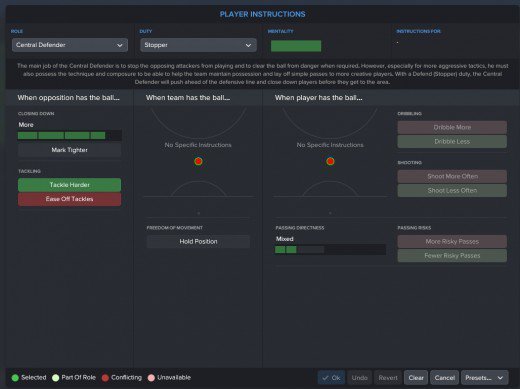
Side Backs: Full Back (Attack) and Complete Wing Back (Attack)
A side back role that is technically capable of contributing more when the team attacks and still defends properly is the Complete Wing Back. And that’s what is needed at the right side. The assigned player has the freedom to operate anywhere around the pitch. But importantly, you have to instruct him to close down more and go hard while tackling. These will make him effective when defending.
For the left back, the reason for installing a Full Back is because it can attack wide and still stay narrow in order to help the central defenders defend crosses, and also contribute in maintaining possession. But to achieve this, you have to enable “Sit Narrow” and “Run Wide With Ball” on the player instruction window. This role is very cautious in defence. And you must instruct the player to close down more.
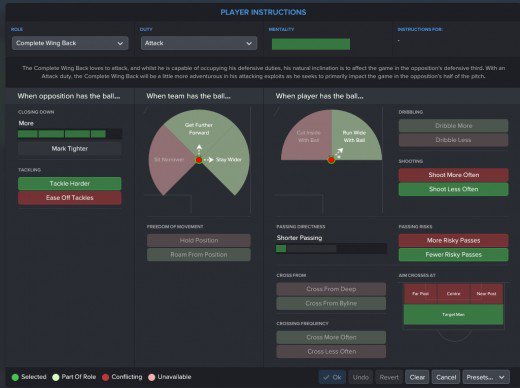
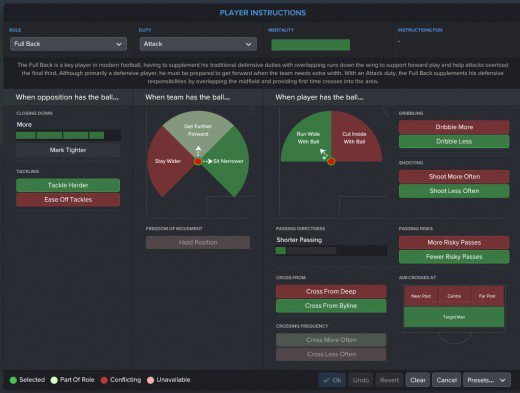
Defensive Midfield: Half Back (Defend)
Both Regista and Roaming Playmaker are slightly good choices for this tactic. But neither of them is really effective defensively; both are very good in creativity and recycling possession. Selecting a Half Back balances the defensiveness and creativity. Any player you assign to this role sits deep to help the centre backs shut down the opponent striker(s) by closing spaces, which makes it difficult for their midfielders to connect with the attackers.
When the team attacks, he moves a bit forward, hanging around the central pitch to recycle possession in case the attack fails. By staying in that position, the player prevents counter attacking threats. As an important role in this tactic, a very good DM must be signed.
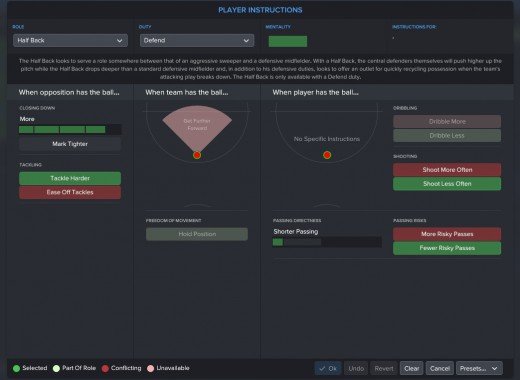
Central Midfield: Central Midfielder (Support)
The Central Midfielder controls the dynamics of this tactic. With the support duty, he’s inspired to balance his attacking and defensive responsibilities, he’s always available to receive passes from teammates, and he can launch a counter by providing long range passes to a wide player or striker. He can also decide to slow the game down by holding the ball and making simple short passes to the back. Whether the team is to attack from wide areas or through the midfield is influenced by this player. Passing, vision, first touch, teamwork, and decisions are the key attributes for this CM.

Side Attacking Midfield: Inside Forward (Support)
As written in a previous article, the same reasons for employing this role are implied in the tactic. Inside forward with the support duty is preferable because the player tends to draw back a bit to receive passes, provides killer balls for the striker, assists in winning the ball from the flank by acting as a wing back when the team defends, and makes excellent runs in the opposition’s box. The “attack” duty couldn’t provide such character. Choosing such duty in this tactic inspires the player to be more selfish with the ball and makes him less creative.
In terms of helping the team defend, you should always set the player to specifically mark the opponent’s AML or ML before kick-off.
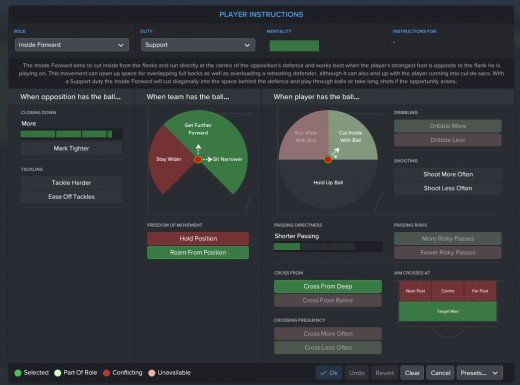
Side Midfield: Wide Playmaker (Attack)
You can select the winger role, but for this tactic to maintain its balanced nature, a role that can cover the midfield, side forward, and provide an extra body in the defence line is needed. The wide playmaker can fill the vacant space in midfield and also operate at the flank. However, the wide player with this job sits narrow and usually drifts inside with the ball, having an aim of creating space for the CWB to occupy good positions for deadly crosses. His movements are difficult for opponents to pick up.
Instructing “Get Further Forward” and “Close Down More” will enable him to make better contributions in attacking and defence phases.
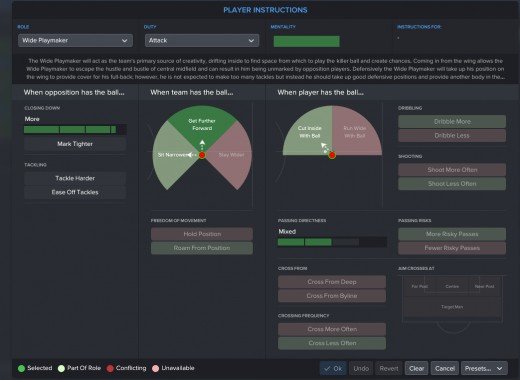
Central Attacking Midfield: Trequartista (Attack)
This role can execute the work of Advance Playmaker excellently and still act as a dangerous central striker role. The assigned player is always roaming around the central and advance midfield to find space, making him available for his teammates. Also, his movements can draw defenders away from good positions, which paves the way for an attacking teammate to easily penetrate the box. Only a technical player can do justice to this role.
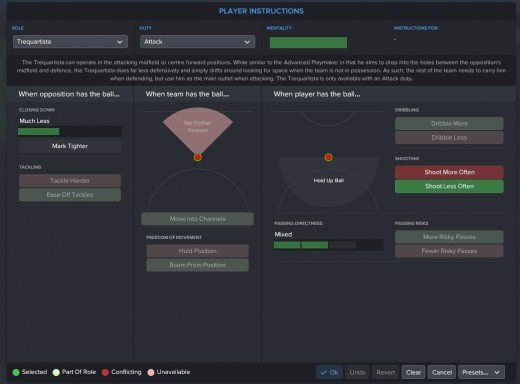
Central Striker: Complete Forward (Support)
This role is more flexible and versatile. With the support duty, the striker drops a little deep like Deep-Lying Forward, or move towards the flank to receive the ball. It also allows the striker to pass, drop killer balls, dribble, and cross to a well-positioned teammate. The Deep-Lying-Forward role can also be suitable for this tactic. So, observe and install the one that’s most productive for your team.
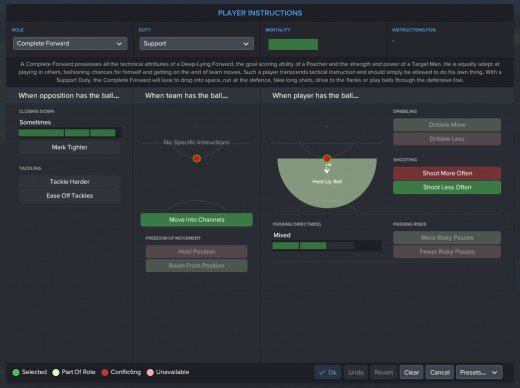
Training
The way you schedule your training is totally up to you. However, if you don’t know much about how to handle the general training, then it’s better to leave that to your assistant manager. Most importantly, choose “Match Tactics” as your match preparation.
Opposition Instructions
Setting the opposition instructions for this formation depends on the type of formation the opponent is using. In general, it’s best to set Closing Down to “Always.” Then set Tackling to “Hard” and the Show Onto Foot to “Weaker Foot”. The following screenshot provides some effective settings.
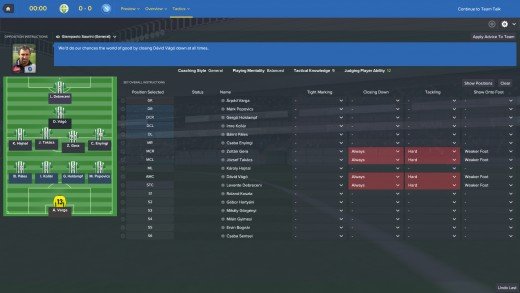
Results and Stats
This tactic is strong and can be used with any team. Its effectiveness increases as the team familiarity increases. Moreover, once the team blends properly to this tactic, better results surface.
The below screenshots show some results obtained from using this tactic. S.S.C. Napoli is placed as an example
